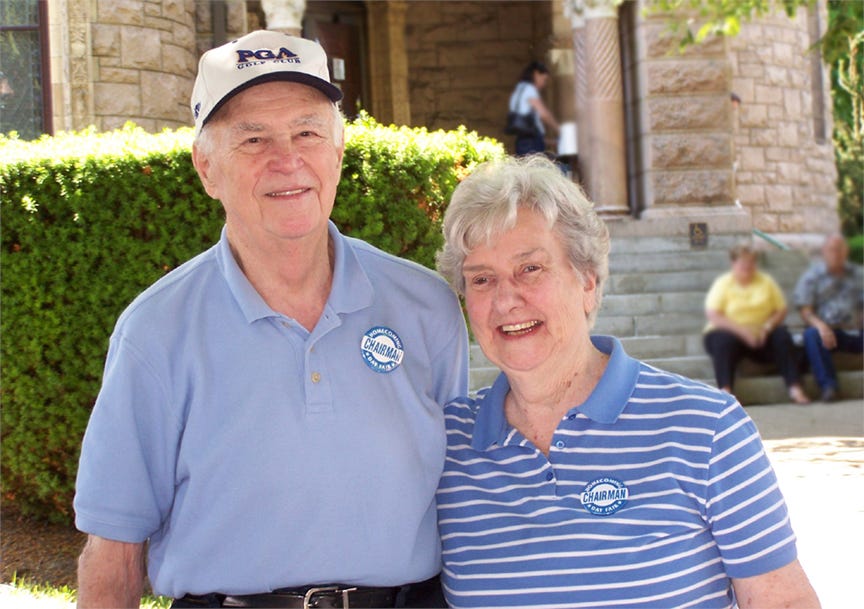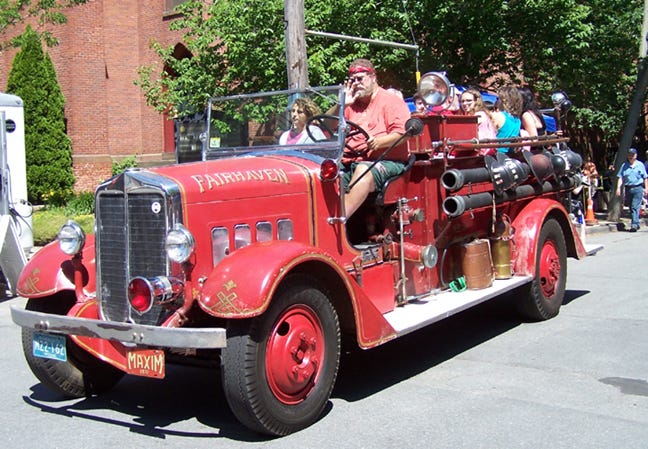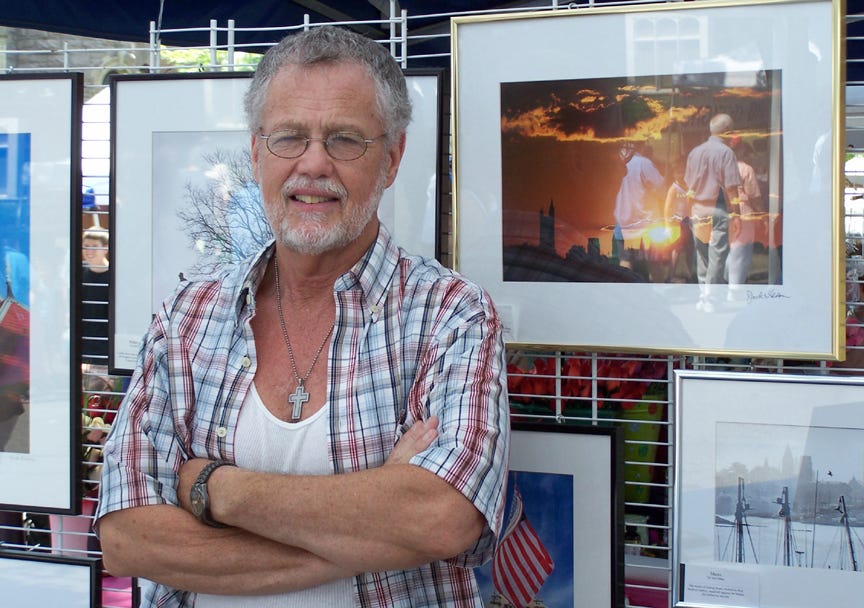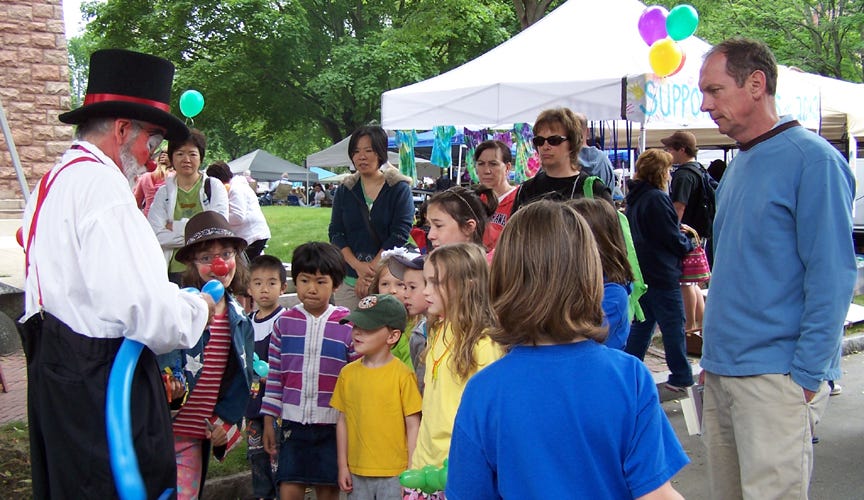“The old home doors are opened wide
The wanderers to greet,
And old-time friends pace side by side
Along the village street.”
—from “In Old Home Week,”
by F.H.L. in Fairhaven Star, August 1903
Welcoming old-time friends to town, the Fairhaven Homecoming Day Fair as we know it today is a relatively modern invention, dating back only to the U.S. Bicentennial in 1976. It has older roots, though, reaching through time and beginning, not in Fairhaven, but with legislation enacted in New Hampshire just after the turn of the century. It was a reaction to the greater number of people who were moving away from and losing touch with their home towns.
“Migration and movement, mobility and motion characterized identity,” author Thomas J. Schlereth writes in Victorian America, Transformations in Everyday Life. “. . . ‘going places’ came to mean a geographic as well as a social destination.” According to census figures, 2.5 million native born Easterners moved west between 1870 and 1900. California real estate booms, the Klondike Gold Run of 1897 and the spectacular migration during the Oklahoma land runs of 1889-93 drained the populations of towns large and small in New England. Rural areas also suffered the loss of people to the fast growing cities. Fewer and fewer people were living in the places where they had grown up.
In the early 1900s, Old Home Days were first proposed as a way to strengthen ties to home.
The Massachusetts legislature, following the lead of its neighbors in New Hampshire, declared the week beginning the last Sunday of July, 1902, to be Old Home Week. It was suggested that communities plan celebrations to boost feelings of loyalty among town residents and promote pride in local heritage.
Fairhaven’s Old Home Week Association was organized in March of 1903, “to promote the welfare of the town by increasing interest in the town among former residents. All people now living in town, or former residents thereof, are members of this Association without further action.” The president of the association was Henry Huttleston Rogers. Committee members included many prominent residents, including George H. Tripp, John H. Howland, Henry D. Waldron, Elbridge G. Paull, Nathaniel Pope, Job C. Tripp, Walter P. Winsor and George B. Luther. Committee chairmen included Levi M. Snow, Hospitality; John I. Bryant, Transportation; Job. C. Tripp, Music, Speakers, Programmes; James L. Gillingham, History and Mrs. Edmund Anthony, Jr., Antiquarian. Fairhaven
Town Meeting approved $500 in funding to support the event.
Through the spring and early summer, the organizers planned a multitude of events. Updates on scheduled activities appeared regularly in the Fairhaven Star as July approached. In the issue before the celebration began, the newspaper noted the Union Street Railway Co. had made a sizeable contribution toward the expenses of Old Home Week. The Improvement Association, strongly supportive of the undertaking, placed a flag on every trolley pole in town. “The result is a line of flags as far as the eye can see," reported the Star, adding that most businesses in town were also decked out with flags and bunting.
Old Home Week took place July 26 to 31, 1903. The celebration began with a union service at the Congregational Church, with Rev. Robert Collyer of New York delivering the sermon and Alton Paull presiding on the organ.
Over the course of the six days, the town was treated to parades, concerts, theatrical productions, dances, athletic competitions, a steamship excursion to Martha’s Vineyard and fireworks. A huge clambake was held under a canvas canopy at Fort Phoenix. Besides clams, the diners got fish, lobster, sweet corn, sweet potatoes, tripe, brown bread and watermelon—all for 75 cents.
In the Annual Report of the Town of Fairhaven, the Select Board noted, “. . . the celebration was a notable one, and the demonstration was a great success as the greatest exhibition of our town industries and of civic patriotism that the town ever seen, and one of the best displays ever made in any town of the state.”
Although Old Home Week, 1903, was an unqualified success, it was not revived annually. Like other large scale celebrations through the years—the town’s centennial in 1912, the sesquicentennial in 1962, a “Festival of Flags” in 1968 and other events—it was a one-time occurrence. Its name and spirit, though, was remembered by the Fairhaven Improvement Association in the 1970s.

The “modern” precursor of today’s annual Homecoming Day Fair was held on June 28, 1975, when the town celebrated the upcoming bicentennial of the United States with a Colonial Fair on Center Street.
The fair’s organizers were Helen Radcliffe, Adeline Grenon and Kay Hayes, with a steering committee that included Holly Ostenberg, Nat Hunt, Jeffrey Brown, Rita Trull, Virginia Bicknell, Clyde Blackburn, Diane Hassett, Donna Blackburn, Marge Tache and Eleanor Breault. Many of the committee members were veterans of church fairs and events sponsored by the Fairhaven Improvement Association, including street fairs in Cushman and Willow Parks, art shows on Union Wharf, flower shows and hobby shows.
Center Street and the lawns of the Town Hall, Millicent Library and the Unitarian Memorial Church were chosen as the location. Local craftspeople demonstrated old fashioned skills such as spinning, quilting, scrimshaw, chair caning and printing. There were also displays of old tools and farm implements, dolls, herbs, a colonial kitchen and a Native American teepee. Musical entertainment, coordinated by Diane Hassett, was provided by school bands, a barbershop quartet and the fife and drum corps of the 4th Old Dartmouth Militia. Box lunches and baked goods were prepared by the churches. Fair workers were dressed in colonial costumes and fairgoers were urged to dress the part as well. The fair was very well attended. Many people who had once lived in Fairhaven returned for the day.
The success of the Colonial Fair prompted the Fairhaven Improvement Association to sponsor another arts and crafts fair the following year. “Homecoming Day Fair” was chosen as its name, in remembrance of the Old Home Week that Henry Huttleston Rogers and his committees had organized 73 years earlier.
Since that first Homecoming Day Fair in 1976, dedicated members of Homecoming committees have work long hours, nearly all year long, to present the annual succession of hugely popular fairs. While it is by no means the longest established annual event in town—the First Congregational Church’s annual Christmas Fair, the Feast of Our Lady of Angels, and the North Fairhaven Improvement Association’s Halloween Horribles Parade are all far older—the Homecoming Day Fair has been the town’s major summertime celebration. Not only is the fair a major fund-raiser the Fairhaven Improvement Association, it also provides fundraising opportunities to the many non-profit groups and churches that operate booths and sell food on Homecoming Day. More importantly, though, is the spirit of community that fills everyone working on and visiting the fair on the last Saturday in June.
Copyright © 2025 by Christopher J. Richard. All Rights Reserved. Earlier versions of this article have appeared in print previously.







I hope you write about the town's sesquicentennial. So many wonderful events.